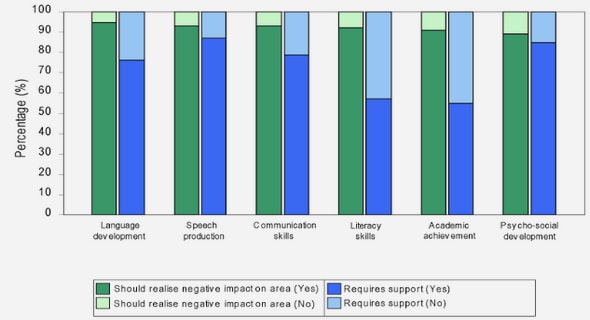(Downloads - 0)
For more info about our services contact : help@bestpfe.com
Table of contents
Chapter I. Introduction
1.1 The global burden of obesity
1.2 Obesity and the regulation of food intake
1.2.1. Obesity and the homeostatic model of appetite control
Appetite and the “Psychobiological” system
Obesity alterations of the psychobiological system
1.2.2. Obesity and the hedonic model of appetite regulation
Sensory domain
Reward domain
Alteration of the hedonic regulation of appetite in the case of obesity
Obesity and food preferences
1.3 Bariatric surgery as a treatment for obesity
1.3.1. Bariatric surgery: insight on its effectiveness and associated challenges
1.3.2. Bariatric surgery, appetite control and food preferences
1.4 Aim and objective of the thesis
1.5 References
Chapter II. A systematic review of food preference modifications after bariatric surgery
Abstract
3.1 Introduction
3.2 Methods and procedures
2.2.1. Protocol and registration
2.2.2. Literature search strategy
2.2.3. Inclusion and exclusion criteria
2.2.4. Study selection and data extraction
2.2.5. Quality assessment
2.2.6. Statistical analysis
3.3 Results
2.3.1. Study selection
2.3.2. Studies and patients’ characteristics
2.3.3. Relative choice between macronutrients, foods and food groups
Relative choice between macronutrients
Relative choice between foods or food categories
2.3.4. Choices related to hedonics
2.3.5. Quality of the total body of evidence
Quality
Publication bias
3.4 Discussion
2.4.1. Main findings
2.4.2. Comparison with other studies
Clinical studies and reviews
Pre-clinical animal studies
2.4.3. Strengths and limitations
2.4.4. Implications of findings and future research
3.5 Conclusion
3.6 References
Chapter III. Food preferences and their perceived modifications before and after bariatric surgery: a cross sectional study
Abstract
3.1 Introduction
3.2 Material and methods
3.2.1 Study population
3.2.2 Data collection and calculations
3.2.3 Statistical analysis
3.3 Results
3.3.1 Sample characteristics and surgery outcomes
3.3.2 Food preferences following bariatric surgery and perceived post-operative modifications
3.3.3 Food preferences between participants with and without taste or smell alterations
3.3.4 Food preferences according to the postoperative follow-up duration
3.3.5 Food preferences between patients in success and failure of bariatric surgery
3.3.6 Food rejections
3.4 Discussion
3.5 Conclusion
3.6 References
Chapter IV. Alterations in food reward following bariatric surgery
Abstract
3.7 Introduction
3.8 Material and Methods
3.8.1 Subjects
3.8.2 Data collection and calculations
Food reward
Behavioral assessment
Other covariates
3.8.3 Sample size calculation
3.8.4 Statistical analyses
3.9 Results
3.9.1 Characteristics of the subjects
3.9.2 Relationship between explicit liking for foods and bariatric surgery
3.9.3 Relationship between explicit wanting for foods and bariatric surgery
3.9.4 Relationship between implicit wanting for foods and bariatric surgery
3.9.5 Relationship between food choices and bariatric surgery
3.9.6 Relationship between fat and sweet appeal bias and behavioral traits
3.9.7 Relationship between food preference for ‘high-fat – sweet’ foods and behavioral traits
3.9.8 Comparison of food reward according to the follow-up periods
3.10 Discussion
3.11 Conclusion
3.12 References
Chapter V. Study of food preferences and eating behavior after bariatric surgery in a real context eating environment: conception and settings of the study
Abstract
5.1. Introduction
5.2. Subjects and methods
5.2.1. Study design
5.2.2. Sample size
5.2.3. Subjects
5.2.4. Recruitment
5.2.5. Primary and secondary endpoints
5.2.6. General organization of the study
5.2.7. Data collection
Anthropometric data and medical history
Gustatory function
Olfactory function
Eating behaviors assessment using TFEQ
Assessment of levels of hunger, desire to eat, prospective consumption and
satiation
Assessment of food preferences
5.2.1. Summary of the course of the experiment (see Figure 5.8)
5.2.2. Statistical analyses
Treatment of missing subjects
Descriptive statistics
Analytical statistics
5.3. Expected results
5.4. Conclusion
5.5. References
Chapter VI. General discussion and conclusion
8.1 Main results
8.2 Reflection about the model of homeostatic and hedonic regulation of appetite following bariatric surgery
8.3 Methodological considerations related to the measure of food preferences in the context of bariatric surgery
8.4 Strengths and limitation
8.5 Perspectives and recommendations
2.4.5. Direction for future research
Study food preferences in an ecological setting
Study other determinants of food preferences
Build a predictive model of weight loss success and failure
A consumer study to improve acceptance of healthy products
2.4.6. Recommendations for clinical practice and public health
Prevent protein energy malnutrition after bariatric surgery
Adherence to nutritional recommendations, barriers and facilitators for the longerterm follow-up
8.6 Conclusion
8.7 References




